| Mixer Specifications |
|
| Processing Capability |
|
| Input |
52 [Monaural: 40, Stereo: 2 (Stereo),Fx Return: 4 (Stereo)] |
| Bus |
32 [AUX/GROUP Switchable MIX bus: 22, MAIN L/R bus: 1 (Stereo), Fx Send bus: 4 (Stereo)] |
| Built in Fx |
4 |
| Input Ports |
|
| 96 kHz |
Max 160 ports |
| 48 kHz |
Max 256 ports |
| MIC/LINE |
24 |
| Stereo (RCA) |
4 (2xStereo) |
| Dante |
32 (96 kHz), 64 (48 kHz) |
| SLOT |
32x2 (96 kHz), 64x2 (48 kHz) |
| USB Audio |
32 |
| Built in Player |
2 (1xStereo) |
| OSC |
1 |
| TALKBACK |
1 |
| Output Ports |
|
| 96 kHz |
Max 148 ports |
| 48 kHz |
Max 244 ports |
| LINE |
16 |
| Dante |
32 (96 kHz), 64 (48 kHz) |
| SLOT |
32x2 (96 kHz), 64x2 (48 kHz) |
| USB Audio |
32 |
| MONITOR OUT (Analog) |
2 (1xStereo) |
| Built in Recorder |
2 (1xStereo) |
| I/O Ports |
|
| Analog Insert I/O |
2 I/O (MIC/LINE Input 15/16) |
| Digital Signal Processing |
|
| Mixer Engine |
96 kHz/54 bit floating point |
| ADC |
96 kHz, 32 bit |
| DAC |
96 kHz, 24 bit |
| Digital I/O sampling rate |
96 kHz, 48 kHz |
| Analog Audio Inputs/Outputs |
|
| MIC/LINE inputs (1-24 channels) |
|
| Connector |
XLR-3-31 equivalent (1:GND,2:HOT,3:COLD) |
| Max input level |
+12dBu (PAD=OFF, TRIM MIN), +32dBu (PAD=ON, TRIM MIN) |
| Min input level |
-62dBu (PAD=OFF, TRIM MAX), -42dBu (PAD=ON, TRIM MAX) |
| Input impedance |
5.0kΩ or more |
| Phantom power |
+48V available |
| LINE inputs (17-24 channels) |
|
| Connector |
Connector: Φ6.3mm(1/4")TRS phone jack, Balanced (TIP: HOT, RING: COLD, SLEEVE: GND) |
| Max input level |
+12dBu (PAD=OFF, TRIM MIN), +32dBu (PAD=ON, TRIM MIN) |
| Min input level |
-62dBu (PAD=OFF, TRIM MAX), -42dBu (PAD=ON, TRIM MAX) |
| Input impedance |
5.0kΩ or more |
| INSERT (15-16 channels) |
|
| Connector |
Φ6.3mm(1/4")TRS phone jack (TIP: SEND, RING: RETURN, SLEEVE: GND) |
| RETURN (RING) |
|
| Max input level |
+18dBu |
| Nominal Input level |
-2dBu |
| Input impedance |
5.0kΩ or more |
| SEND (TIP) |
|
| Max input level |
+18dBu |
| Nominal Input level |
-2dBu |
| Input impedance |
100kΩ or less |
| TALKBACK inputs |
|
| Connector |
XLR-3-31 equivalent (1: GND,2: HOT,3: COLD) |
| Max input level |
+10dBu |
| Min input level |
-65dBu |
| Gain range |
0 - 55dB |
| Input impedance |
5.0kΩ or more |
| Phantom power |
+48V available |
| Stereo (RCA) inputs (1-2) |
|
| Connector |
RCA pin jack, Unbalanced |
| Max input level |
+6dBV (1.995Vrms) |
| Nominal Input level |
-10dBV (0.316Vrms) |
| Head room |
16dB |
| Input impedance |
10kΩ or more |
| LINE Outputs (1-16 channels) |
|
| Connector |
XLR-3-32 equivalent (1: GND, 2: HOT, 3: COLD) |
| Nominal output level |
+6dBu (D.ref: -9dBFS)
+4dBu (D.ref: -14dBFS, -16dBFS)
+4dBu or 0dBu (D.ref: -18dBFS, -20dBFS) |
| Max output level |
+15dBu (D.ref.: -9dBFS, A.ref.: +6dBu)
+18dBu (D.ref.: -14dBFS, A.ref.: +4dBu)
+20dBu (D.ref.: -16dBFS, A.ref.: +4dBu)
+18dBu (D.ref.: -18dBFS, A.ref.: 0dBu)
+20dBu (D.ref.: -20dBFS, A.ref.: 0dBu)
+22dBu (D.ref.: -18dBFS, A.ref.: +4dBu)
+24dBu (D.ref.: -20dBFS, A.ref.: +4dBu) |
| Output impedance |
100Ω or less |
| MONITOR Outputs (L,R) |
|
| Connector |
XLR-3-32 equivalent (1: GND, 2: HOT, 3: COLD) |
| Max output level |
+24dBu |
| Nominal output level |
+4dBu |
| Output impedance |
100Ω or less |
| Headphone Output |
|
| Connector |
Φ6.3mm(1/4") stereo phone jack and 3.5mm stereo mini phone jack |
| Max output power |
100mW + 100mW (32Ω load, when connected to only one jack) |
| Digital Audio Inputs/Outputs |
|
| USB Audio |
|
| Connector |
Type-B |
| Input |
32ch *USB to Sonicview |
| Output |
32ch *Sonicview to USB |
| Sampling rate |
48 kHz, 96 kHz |
| Bit depth |
32 bit |
| Dante (Primary/Secondary) |
|
| Connector |
etherCON Cat5e compatible |
| Number of channels |
64 channels (48 kHz), 32 channels (96 kHz) |
| Ethernet |
1000BASE-T (IEEE802.3ab) |
| Cable |
CAT5e STP |
|
Supports Redundant mode and Switched mode |
| Control Inputs/Outputs |
|
| GPIO |
DSUB25pin female, inch type |
| Input circuit |
pull up (5V) |
| Output circuit |
Open corrector |
| Output impedance |
10Ω |
| Voltage Resistance |
20V |
| Max Current |
35mA |
| Max supply current (+5V) |
50mA |
| FOOT SWITCH |
|
| Connector |
Φ6.3mm(1/4")TS phone jack (TIP:SIG, SLEEVE: GND) |
| ETHERNET (for control) |
|
| Connector |
RJ-45 |
| Ethernet |
100BASE-TX, 1000BASE-T |
| Protocol |
TCP/IP |
| Other Inputs/Outputs |
|
| WORD IN |
|
| Connector |
BNC (Unbalanced) |
| Input level |
0.5Vpp - 5Vpp |
| Impedance |
75Ω +/-10% |
| Input frequency |
48 kHz, 96 kHz |
| Allowable frequency deviation |
+/-100ppm |
| WORD THRU/OUT |
|
| Connector |
BNC (Unbalanced) |
| Output level |
equivalent to 5V TTL |
| Output frequency |
48kHz, 96kHz |
| Impedance |
75Ω +/-10% |
| USB (Top panel) |
For Keyboard, and Mass Storage |
| Connector |
Type-C |
| Standard |
USB2.0 HIGH SPEED (480Mbps) |
| Bus power |
5V-0.5A |
| Class |
HID, Mass storage |
| USB (Rear panel) |
For Audio Interface (Dedicated driver required) |
| Connector |
Type-B |
| Standard |
USB2.0 HIGH SPEED (480Mbps) |
| Lamp |
|
| Connector |
XLR 4pin female (1:N.A., 2:N.A., 3:GND, 4:+12V) |
| Supply voltage |
0V-12V (Adjustable brightness) |
| Max power |
5W |
| Recorder/Player |
|
| Media |
|
| SD Card |
SDHC (8GB-32GB Class10 or more), SDXC (64GB-128GB Class10 or more) |
| USB memory |
Size: 8GB-128GB (Play Only) |
| Supported File System: |
FAT32 (SDHC, USB memory)
exFAT (SDXC, USB memory) |
| Stereo recording/Playback Formats |
|
| WAV/BWF |
|
| Recording |
48 kHz/96 kHz, 24 bit, 2ch |
| Playback |
48 kHz/96 kHz, 16/24bit、2ch |
| MP3 |
|
| Playback |
44.1 kHz/48 kHz, 32kbps~320kbps |
| AAC |
|
| Playback |
44.1 kHz/48 kHz, 64kbps~320kbps |
| General |
|
| Main display |
7 inch, Colored touch panel display x3 |
| Resolution |
800x480 |
| Channel display |
Monochrome x3 |
| Resolution |
384x68 |
| Fader |
100mm stroke, Motor driven |
| Overall dimensions |
690.8(W) x 228.1(H) x 554.4(D) mm
27.20 (W) x 8.99(H) x 21.83 (D) inch |
| Weight |
18kg / 39.69lb |
| AC IN |
AC100V-240V 50/60Hz |
| Power consumption |
85W |
| Operating Temperatures |
0 - 40 ℃ |
| Computer system requirements |
|
| USB Audio Interface |
|
| Windows |
|
| Supported Operating System |
Windows 11 64 bit
Windows 10 64 bit |
| Computer hardware requirements |
Windows computer with a USB2.0(or higher) port. |
| Mac |
|
| Supported Operating System |
macOS Monterey (12)
macOS Big Sur (11)
macOS Catalina (10.15) |
| Computer hardware requirements |
Mac with a USB2.0(or higher) port. |
| Control Software |
|
| Windows |
Windows 11 64 bit
Windows 10 64 bit |
| Mac |
macOS Monterey (12)
macOS Big Sur (11)
macOS Catalina (10.15) |
| iPadOS |
iPadOS 15
iPadOS 14 |
| Included Items |
| TASCAM Sonicview 24 x1 |
| Power code (JAPAN USA/EUROPE/OCEANIA) x3 |
| Owner's manual with warranty x1 |
| TASCAM ID registration guide x1 |
| Options |
| AK-DCSV24: Dust cover |
| AK-TB15: Tablet shelf |
| IF-AE16: AES interface card, I/O 16ch |
| IF-DA64: Dante interface card, I/O 64ch, Redundant Supported |
| IF-MA64/EX: MADI interface card, I/O 64ch Coaxial/Optical |
| IF-MA64/BN: MADI interface card, I/O 64ch Coaxial |
| IF-AN16OUT: Analog outputs interface card, 16ch |
| IF-MTR32 (Scheduled to be released in 2023): MTR card, 32 tracks, punch-in |
| SB-16D (Scheduled to be released in 2023): Stage box, Dante, 16ch I/O |




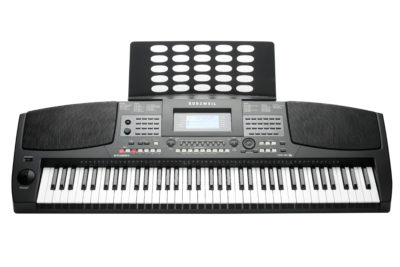
















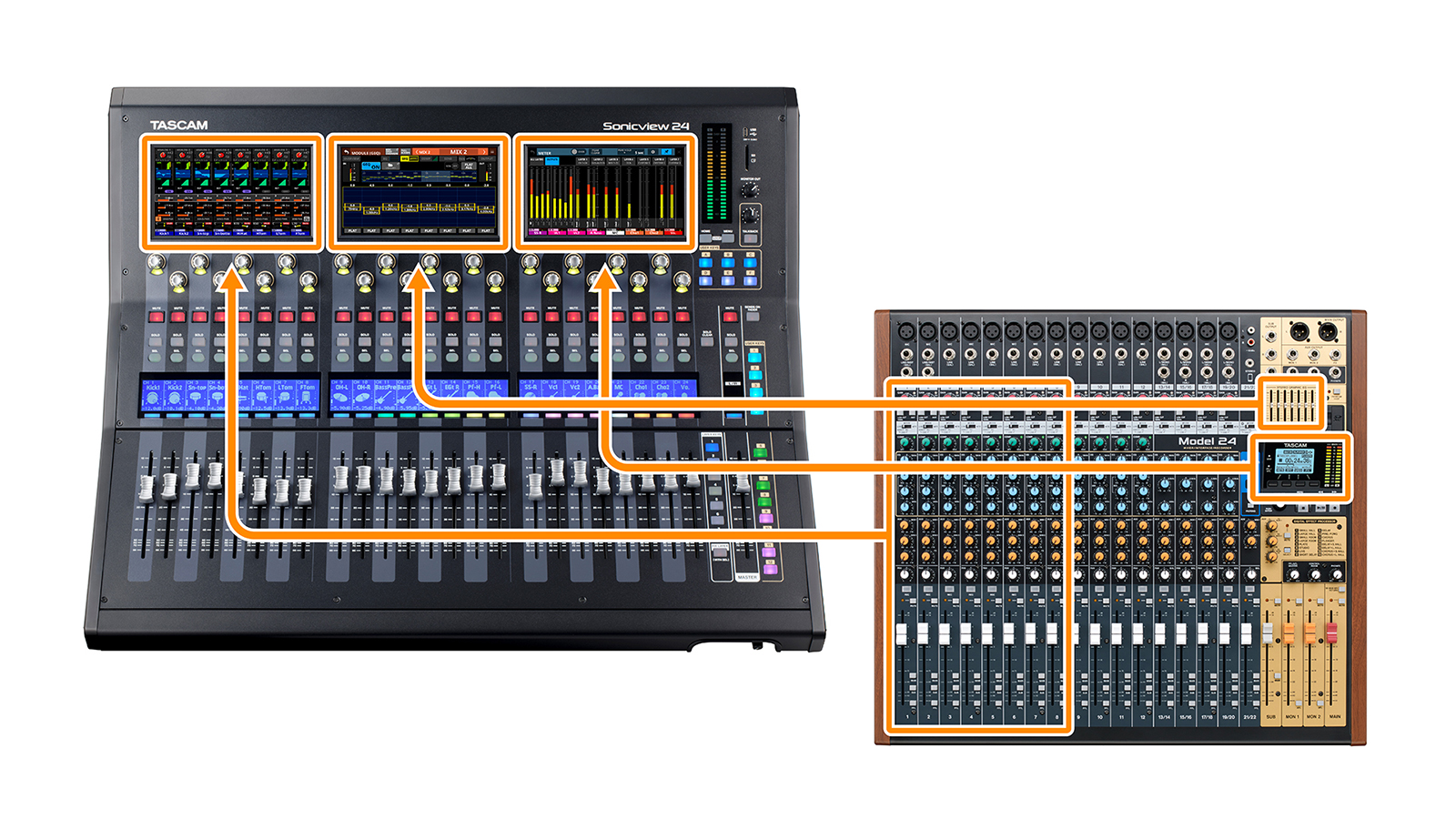
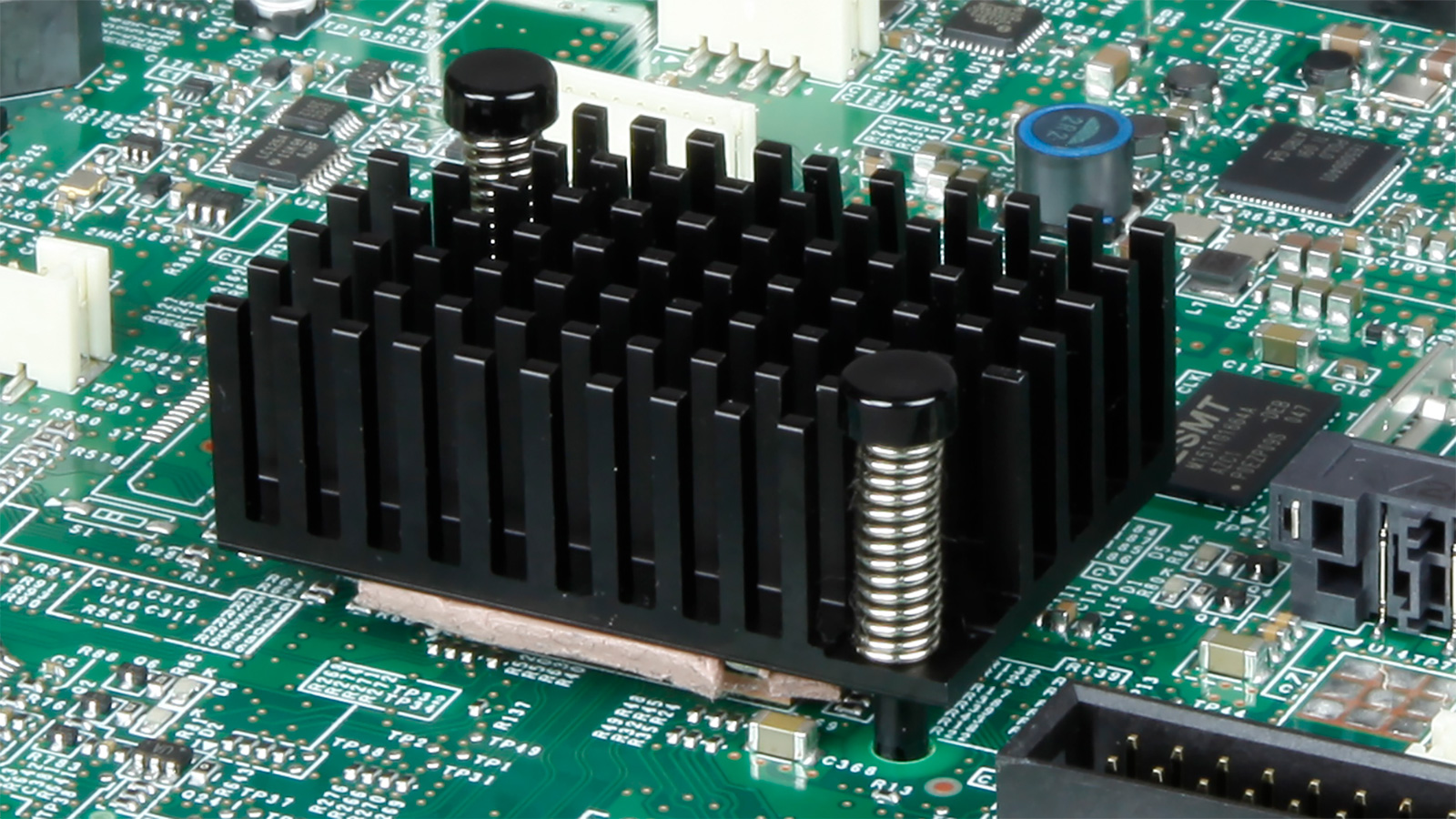
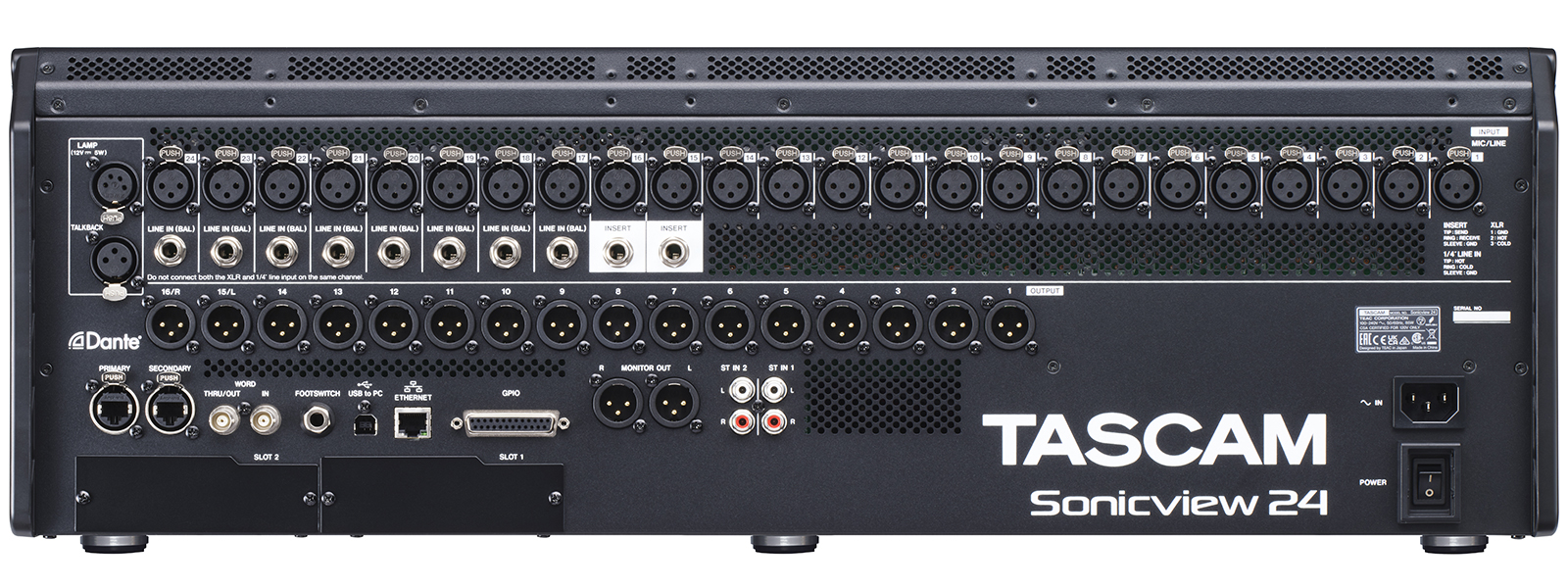






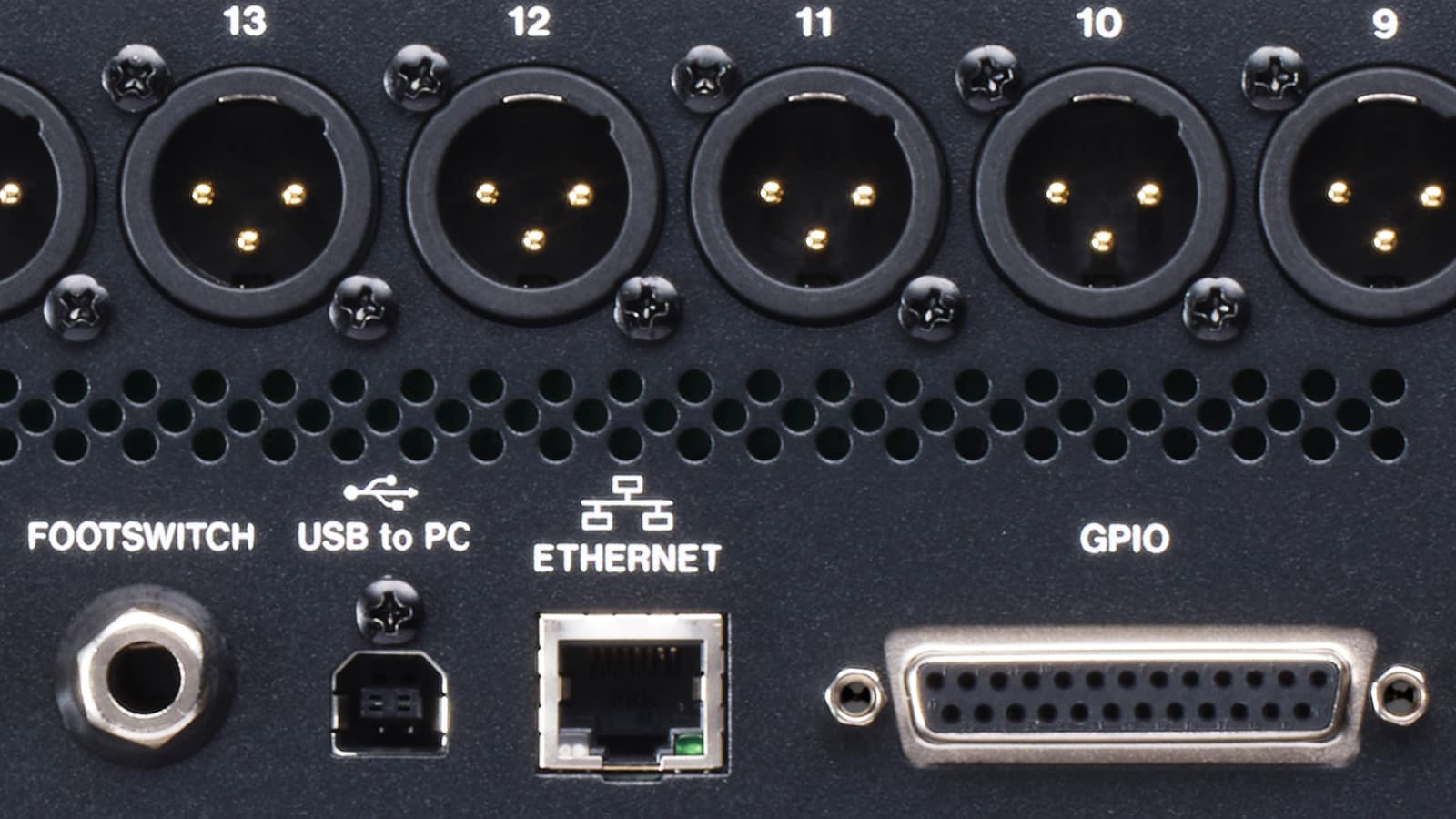




 Output module: GEQ (RTA: off) screen
Output module: GEQ (RTA: off) screen Output module: GEQ (RTA: on) screen
Output module: GEQ (RTA: on) screen FX Return module: Plate Reverb
FX Return module: Plate Reverb
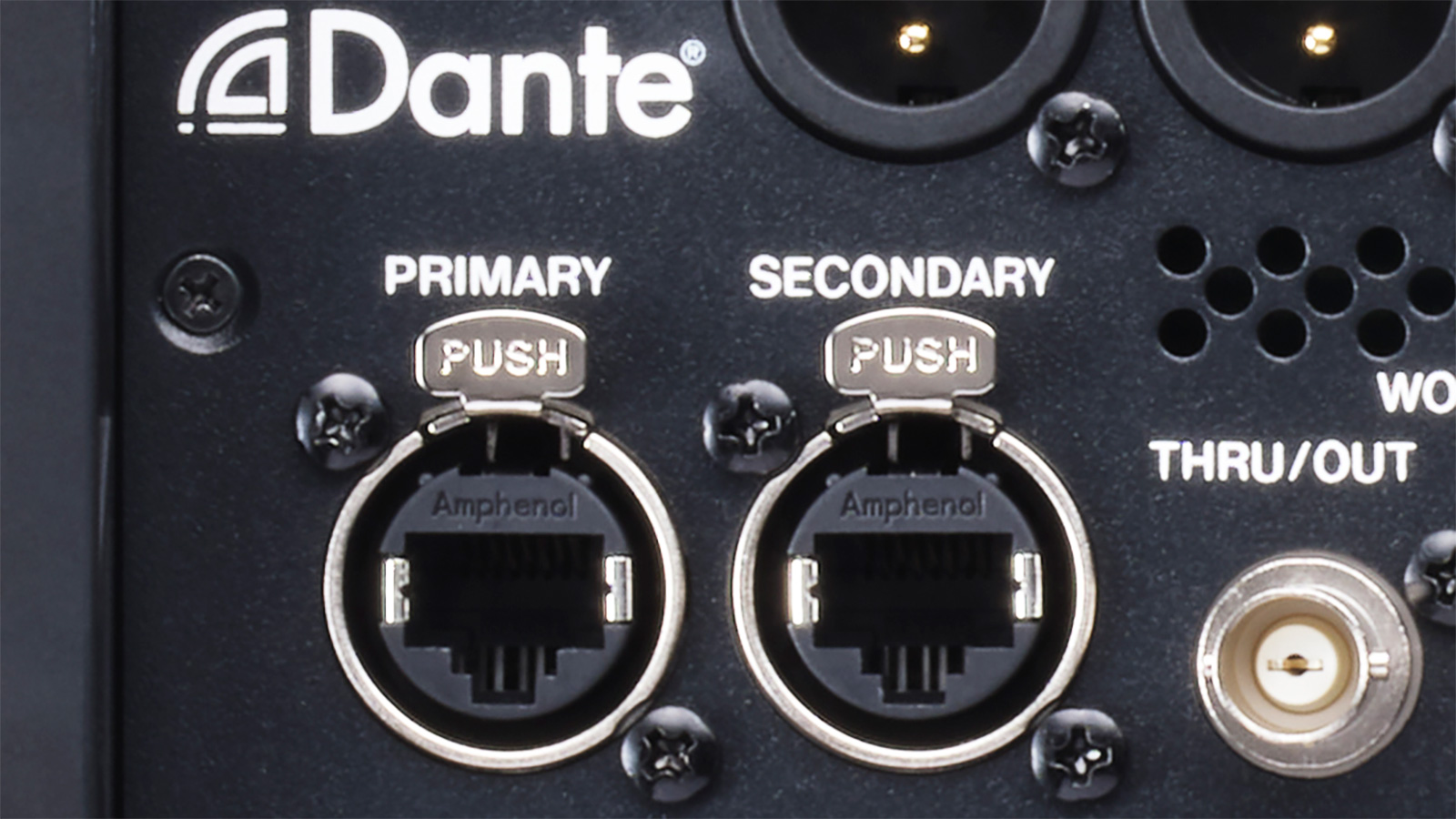














Reviews
There are no reviews yet.